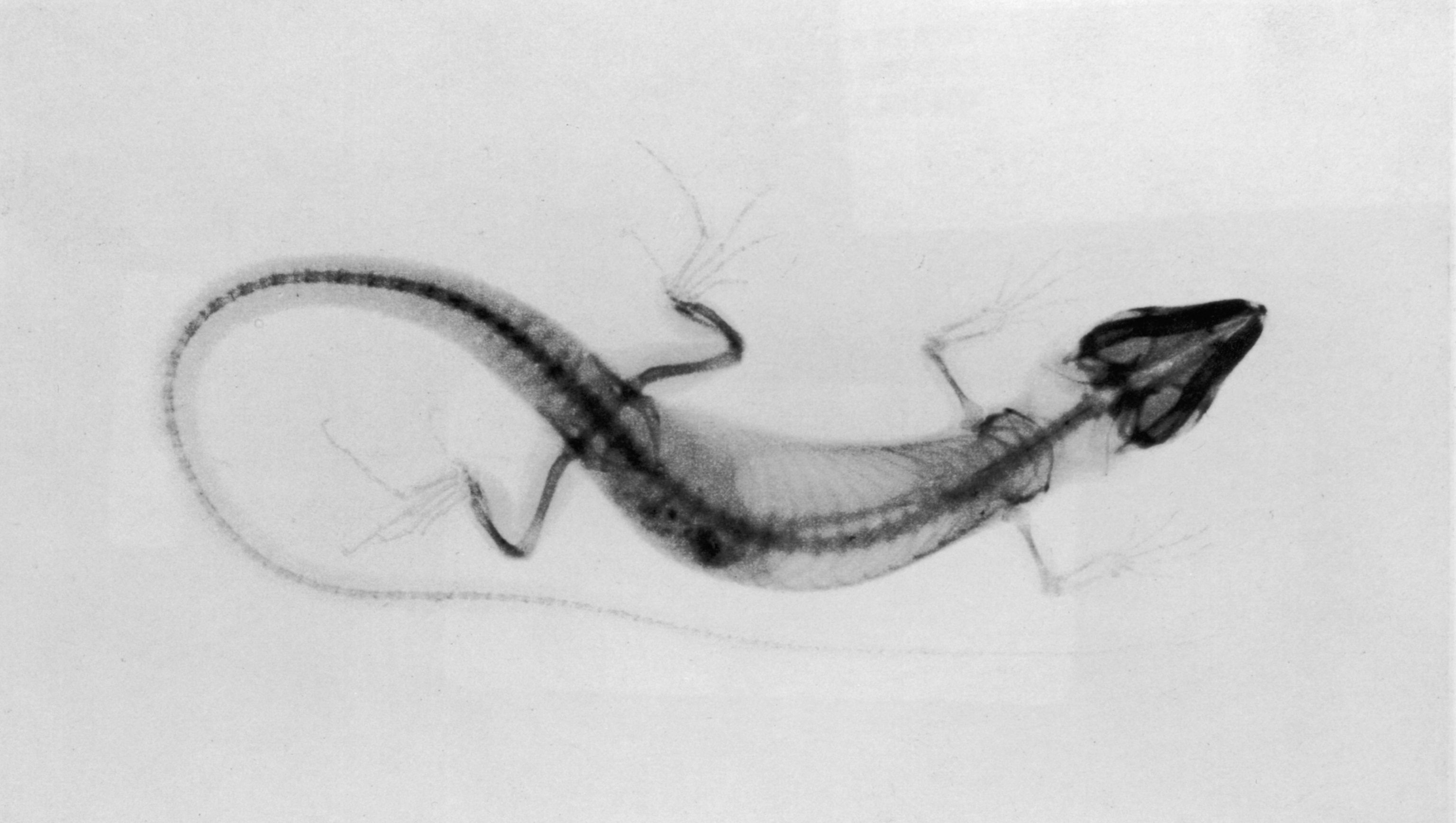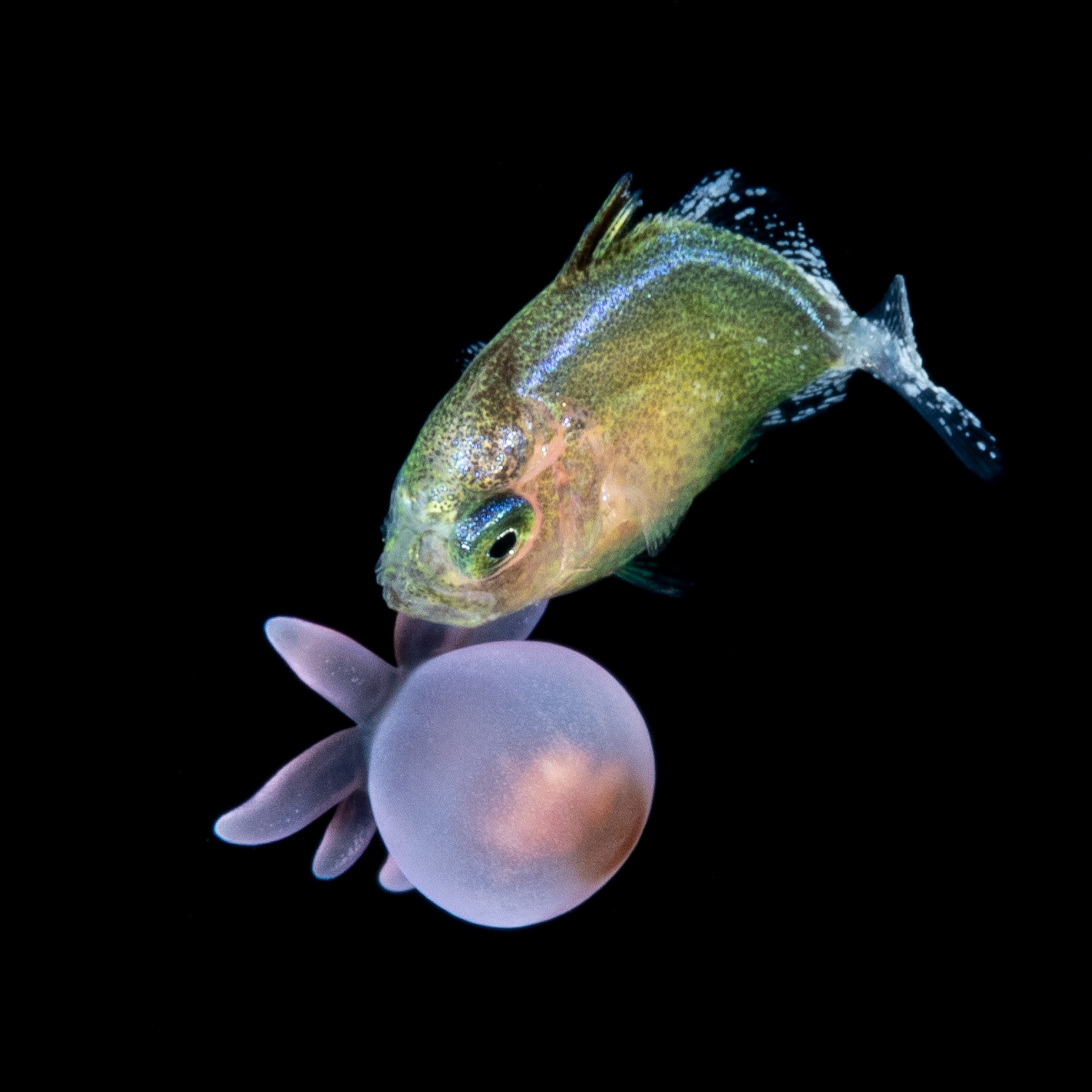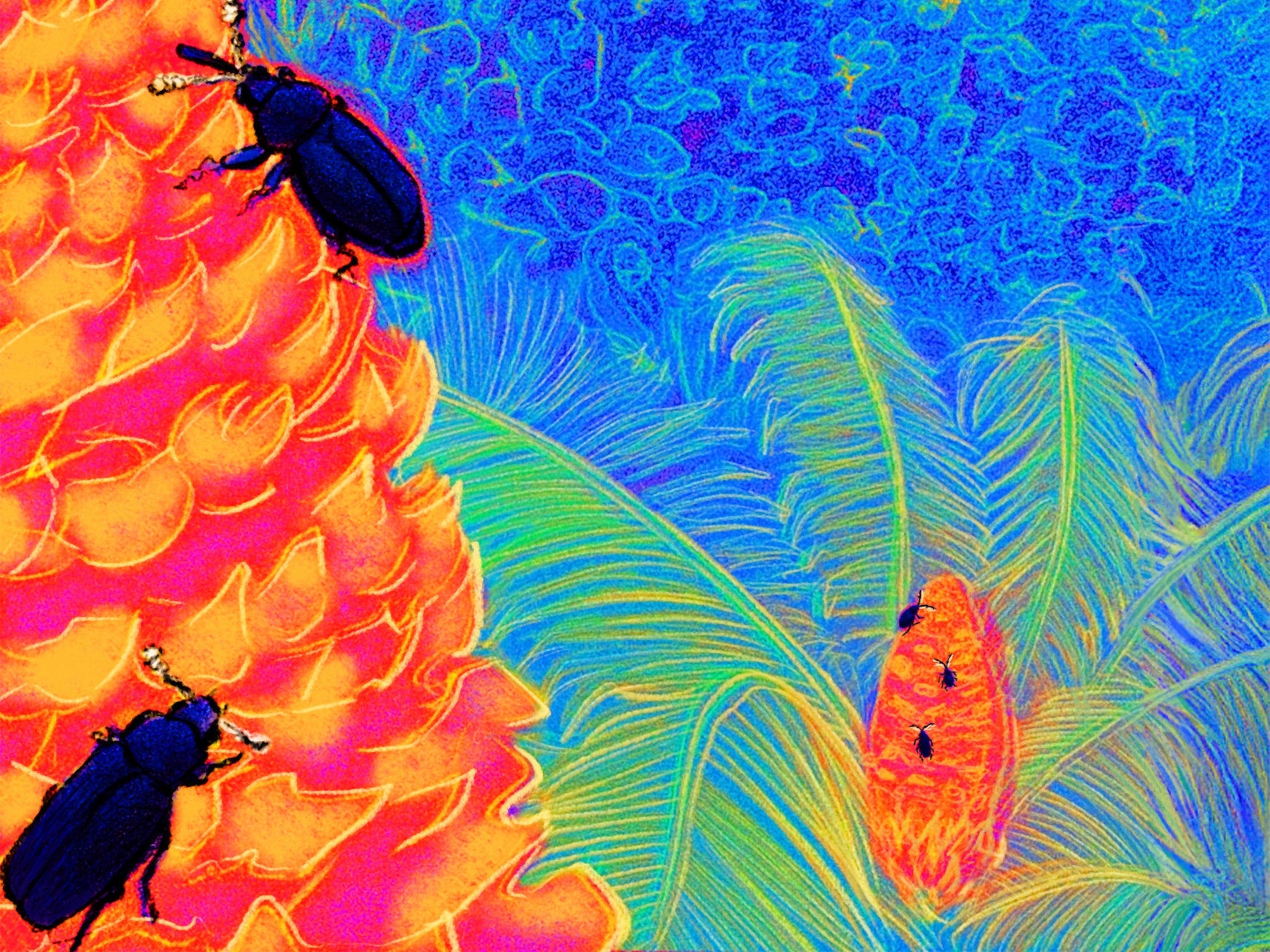Flying fish are known for their spectacular acrobatics, bursting through the ocean’s surface and sailing in the air as long as 3,000 feet.
Why fly? To avoid predators. They’re “basically marine popcorn,” says Steve Huskey, a biologist at Western Kentucky University and author of The Skeleton Revealed. "Everybody eats them.”
The key to their flight is a strong vertebral column and tail area, which anchors powerful muscles that move their tails back and forth, like propellers. Bones keep flying fish fins extended, allowing them to function like bird wings.
Flying fish are just one impressive example of a species with an endoskeleton, an internal skeleton typically made of bone and found in vertebrates, including mammals, birds, reptiles, amphibians, and fish. (See otherworldly photos of animal skeletons.)
These structures store crucial minerals, such as calcium; provide support to the body; protect internal organs; and enable movement via skeletal muscles, which attach to the bones via tendons. Joints, the place where two bones connect, provide flexibility to an otherwise rigid skeleton—think of the fluidity of a primate swinging effortlessly through the trees.
(Oldest Skeleton of Human Ancestor Found)
Though bony endoskeletons are the best known, the animal kingdom features three other types of skeleton: exoskeletons, cartilaginous endoskeletons, and hydrostatic skeletons.
A diversity of bones
Endoskeletons have evolved to suit their owner’s lifestyle. Bird bones, for instance, are full of air pockets, which not only lightens their load but may help them draw in more oxygen during flight.
Turtle shells, bony plates that are fused to the animal’s shoulder blades and backbone, are actually ribs modified over the course of evolution. A turtle shell helps protect the slow-moving, otherwise vulnerable animals from predators, but recent research suggests it originally evolved as a stable base allowing ancient turtles to dig and escape the heat.
Some vertebrates, particularly males, have additional features on their skulls. Male veiled chameleons, for instance, sport colorful, bony casques on their heads, likely to attract females. Males of the deer family, such as moose and elk, grow antlers—bony extensions of their skulls—both to show dominance and to attract mates.
While antlers are shed and regrown every year, horns are surrounded by a tough natural substance called keratin and are never shed, except by pronghorns. Some females also have horns, which are usually smaller than those of males. (Read how bones may have evolved to act like batteries.)

Built-in armor
External skeletons, or exoskeletons, are the hard casings that protect arthropods, such as insects, crustaceans, and spiders.
This natural armor is a very effective defense against predators, many of which can’t bite through the exoskeleton, Huskey says. “You’ve got something nobody else has got.”
Hercules beetles of Latin America and the Caribbean have particularly tough exoskeletons. Males grow two long horns that they use to battle for access to females. The two insects charge at each other like jousters, but it’s the one who picks up the other in his horns and body slams him on the ground that wins. Females also prefer males with longer horns, a sign of robust health. (Read more about animal attraction.)
Among the prettiest exoskeletons are seashells, which keep soft-bodied mollusks, such as conch, scallops, and cone snails safe. An outer layer of a mollusk’s tissue, called the mantle, secretes proteins and minerals to form its distinct skeletal sanctuary.
One drawback of an exoskeleton: it’s too rigid to allow for the animal to grow. A lobster’s shell, for instance, may be a solid defense against a hungry seal, but as the lobster gets larger, it must shed its shell to make way for a new one. It can take several weeks for a new shell to totally harden, during which time the lobster is very vulnerable to predators.

A skeleton made for swimming
A group of fishes called elasmobranchs—sharks, rays, skates, and chimeras—have endoskeletons made entirely of cartilage, a type of strong, flexible tissue. Because cartilage is tough but lighter than bone, it allows fish to swim quickly but save energy.
Many vertebrates with endoskeletons—humans included—also have cartilage, which gives noses and ears their shape, for instance. Early in development, most mammal fetuses have cartilaginous skeletons, which slowly ossify into bone.
It’s long been thought that modern-day sharks derive from a primitive ancestor that hadn’t yet evolved bones. Instead, in 2015, scientists announced the discovery of bone cells in a 380-million-year-old fossilized shark—suggesting sharks may have evolved from ancestors with bones, had bones themselves at one time, and then lost them in favor of lighter cartilage.
Elasmobranchs are also covered in what’s called dermal denticles, textured scales that scratch like sandpaper if you rub them the wrong way. When they’re aligned, these scales reduce drag and increase swimming speed.
A 2017 study found that dermal denticles in a species of skate originate from the same cells as teeth. This supports a theory that the scales of ancient fish may have evolved into teeth as we know them today. Teeth are considered part of a skeleton, though they are made of enamel, a hard collection of minerals, not bone. (Read more about how teeth may have evolved from fish scales.)
Skeleton switcheroo
Hydrostatic skeletons are fluid-filled columns, or cavities, inside invertebrates, including jellyfish, flatworms, nematodes, and annelids such as earthworms. Muscles and connective tissue form a tough body wall around the cavity, explains Bill Kier, a biologist at the University of North Carolina.
Earthworms’ columns are filled with hemophilic fluid, which essentially functions as blood, Kier says. The columns are segmented so that the worms can expand and contract their muscles independently, creating waves of movement allowing the animal to wriggle along the ground.
Sea anemones have muscles around their internal cavity that work together—similar to how our biceps and triceps maneuver our upper arms—to move the animal and escape potential predators, Kier says.
Some animals, such as blue crabs, can switch from an exoskeleton to a temporary hydrostatic skeleton when they’re in a vulnerable state. In a 2003 study, Kier and colleague Jennifer Taylor found that during molting, the crabs’ internal water pressure greatly increased, so that the fluid inside the crabs’ soft bodies acted like a hydrostatic skeleton that allowed the animal to move. After about three days, the newly formed exoskeleton was tough enough to take back over again.
Huskey says skeletons are incredible feats of evolution, particularly in how each little piece is crucial to an animal and how it navigates the environment.
“Without a skeleton we’re just a big bag of muscles that lay there and twitch on the floor,” he says. “We can’t get anywhere without the skeleton that creates the locomotion, feeding, and behaviors we enjoy so much."









